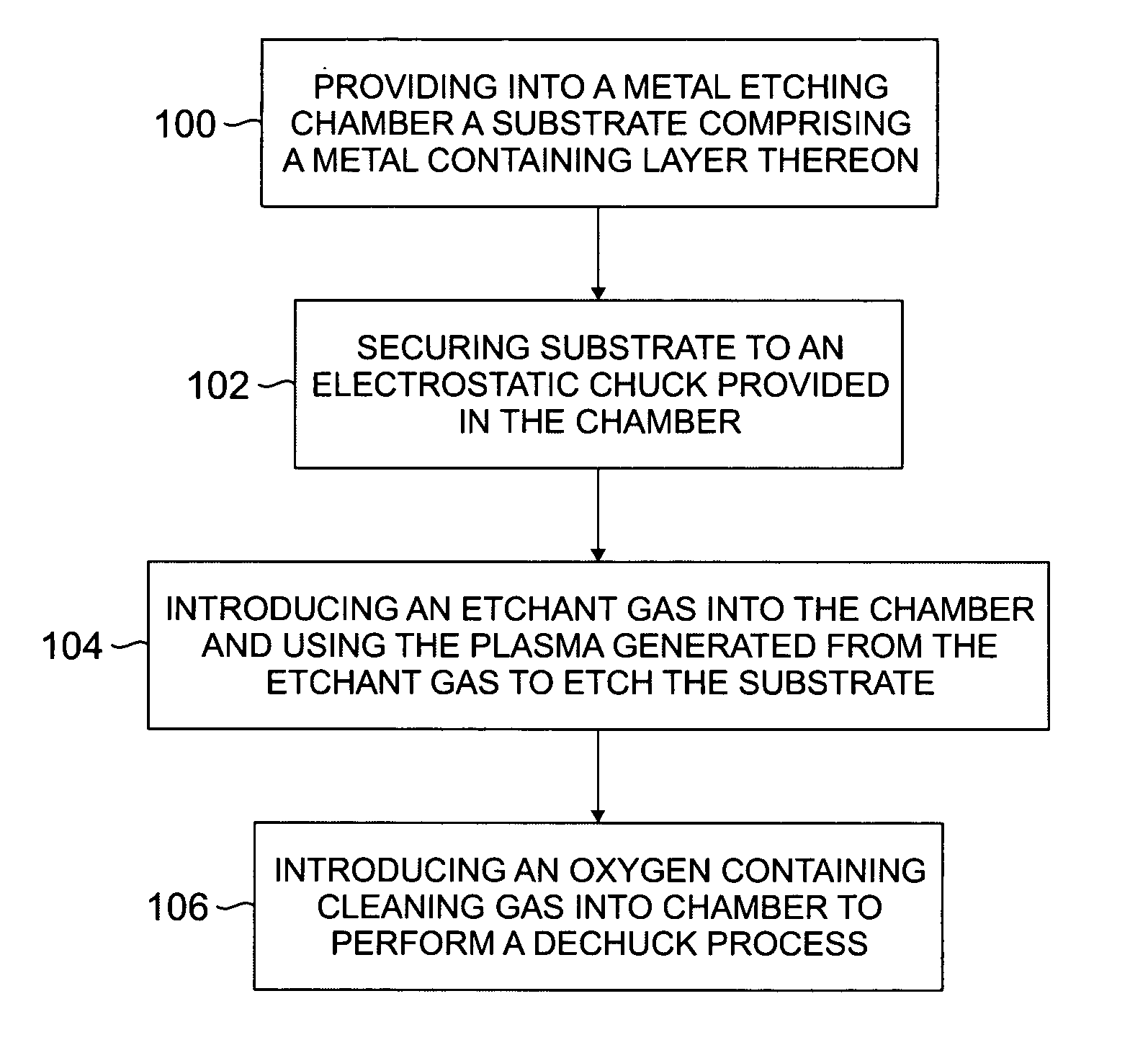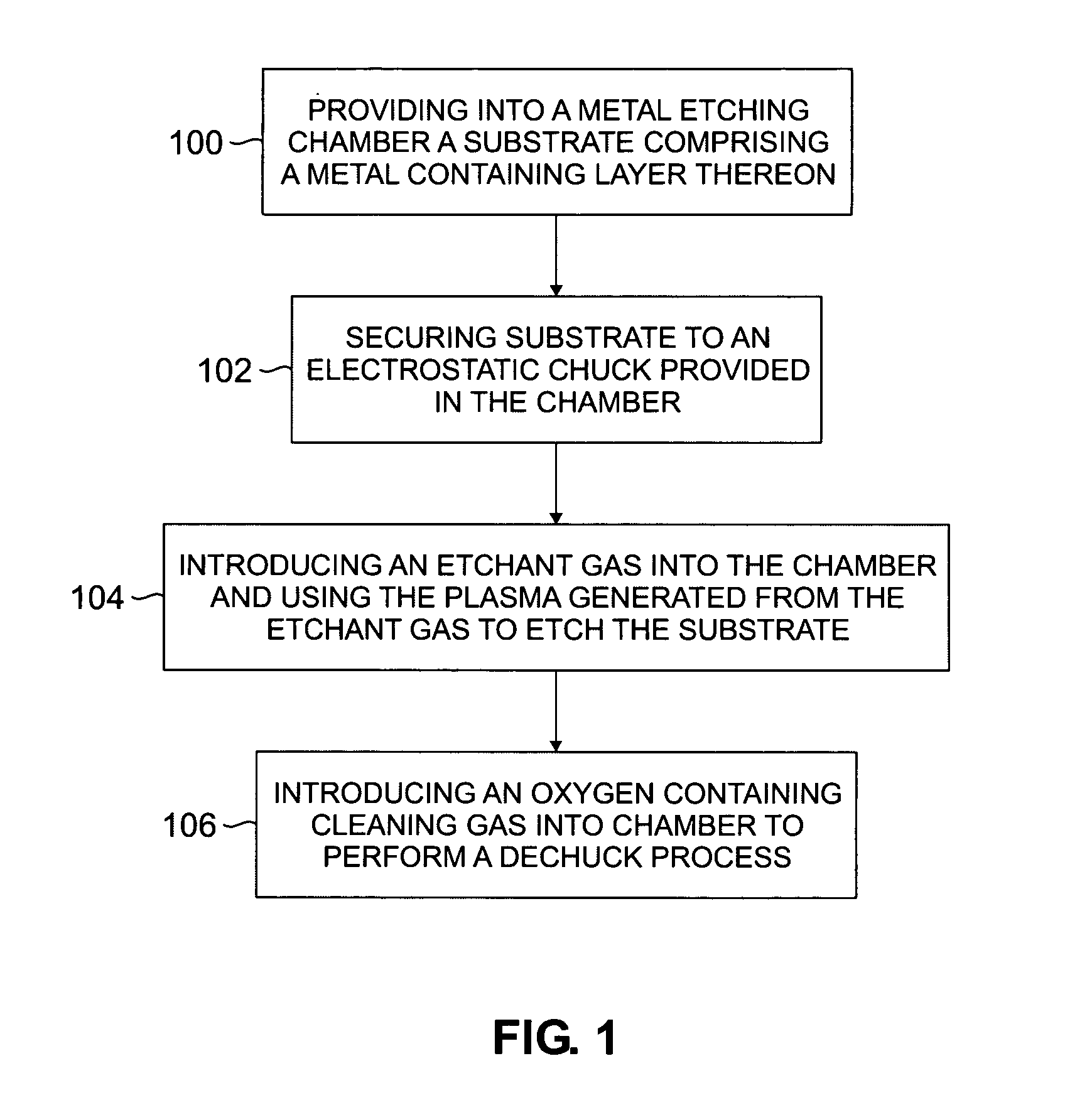Methods for cleaning processing chambers
- Summary
- Abstract
- Description
- Claims
- Application Information
AI Technical Summary
Benefits of technology
Problems solved by technology
Method used
Image
Examples
Embodiment Construction
[0013] The present invention provides a etchant residue cleaning method, wherein the residue resulting from a metal process is softened, burnt and even removed. The processing time is thus reduced to provide a consistent yield. According to an exemplary embodiment, the subject methods are applied during or after a metal etching process that uses Cl2, BCl3, and CHF3, as the etchant gas. An etchant gas mixture is introduced into a metal etching chamber containing a substrate comprising a metal containing layer to generate plasma for performing the etchant process. The metal containing layer may comprise Aluminum, or Copper, or both, and / or other metals that are layered on a substrate. The chamber is preferably equipped with an electrostatic chuck for securing the substrate during processing. During the metal etching process, or in most cases after the metal etching process, an oxygen-containing gas is introduced into the chamber and energized to form an oxygen plasma. The oxygen plasm...
PUM
| Property | Measurement | Unit |
|---|---|---|
| Pressure | aaaaa | aaaaa |
| Pressure | aaaaa | aaaaa |
| Pressure | aaaaa | aaaaa |
Abstract
Description
Claims
Application Information
 Login to View More
Login to View More - R&D
- Intellectual Property
- Life Sciences
- Materials
- Tech Scout
- Unparalleled Data Quality
- Higher Quality Content
- 60% Fewer Hallucinations
Browse by: Latest US Patents, China's latest patents, Technical Efficacy Thesaurus, Application Domain, Technology Topic, Popular Technical Reports.
© 2025 PatSnap. All rights reserved.Legal|Privacy policy|Modern Slavery Act Transparency Statement|Sitemap|About US| Contact US: help@patsnap.com


